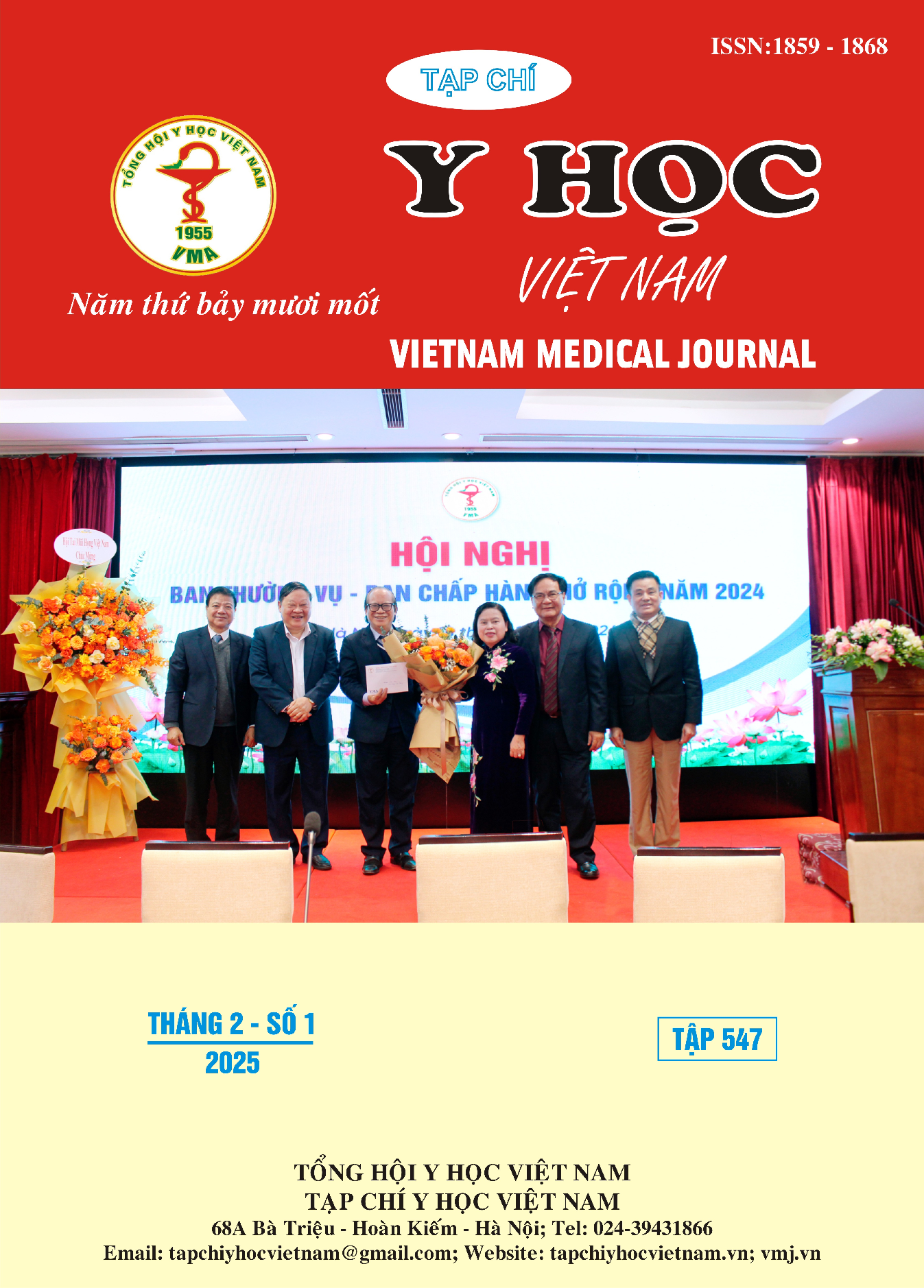INITIAL RESULTS OF LAPAROSCOPIC ORCHIDOPEXY IN PATIENTS WITH RECURRENT UNDESCENDED TESTIS
Main Article Content
Abstract
Objectives: To evaluate the safety and efficacy of laparoscopic orchidopexy in patients with recurrent undescended testis. Subjects and methods: A descriptive observational study of 4 patients with recurrent undescended testis who underwent laparoscopic. Results: The 4 patients were aged 6, 8, 10, and 14 years, respectively. All patients had undergone previous orchidopexy, laparoscopic repair of the processus vaginalis. Right-sided undescended testis: 3 cases, left-sided: 1 case. All testes were palpable in the inguinal canal, with 2 cases high near the deep inguinal ring and 2 cases low near the superficial inguinal ring. Operative time ranged from 60 to 150 minutes. One case had a persistent patent processus vaginalis on one side, which was ligated. All cases had successful orchidopexy without intra- or postoperative complications. Postoperative hospital stay ranged from 4 to 7 days. All patients were followed up with Doppler ultrasound, which showed good testicular blood flow. Conclutions: Laparoscopic orchidopexy is a safe and effective method for patients with recurrent undescended testis.
Article Details
Keywords
Undescended testis, cryptorchidism, orchidopexy, laparoscopic orchidopexy.
References
2. Williamson, S. H., Davis-Dao, C. A., Huen, K. H. et al. (2022). Timely orchiopexy by 18 months of age: Are we meeting the standards defined by the 2014 AUA guidelines?. Journal of Pediatric Urology, 18(5), 683-e1.
3. Lopes, R. I., Naoum, N. K., Chua, M. E. et al. (2016). Outcome analysis of redo orchiopexy: scrotal vs inguinal. The Journal of Urology, 196(3), 869-874.
4. Taran, I., & Elder, J. S. (2006). Results of orchiopexy for the undescended testis. World journal of urology, 24, 231-239.
5. Riquelme, M., Aranda, A., Rodarte-Shade, M. et al. (2012). Totally laparoscopic approach for failed conventional orchiopexy. Journal of Laparoendoscopic & Advanced Surgical Techniques, 22(5), 514-517.
6. Meij–deVries, A., van der Voort, L. M., Sijstermans, K. et al. (2013). Natural course of undescended testes after inguinoscrotal surgery. Journal of Pediatric Surgery, 48(12), 2540-2544.
7. Tong, Q., Zheng, L., Tang, S. et al. (2009). Laparoscopy-assisted orchiopexy for recurrent undescended testes in children. Journal of pediatric surgery, 44(4), 806-810.
8. Yang, Z., Li, S., Zeng, H. et al. (2020). Laparoscopic orchiopexy versus open orchiopexy for palpable undescended testis in children: a prospective comparison study. Journal of Laparoendoscopic & Advanced Surgical Techniques, 30(4), 453-457.
9. Youssef, A. A., Marei, M. M., Abouelfadl, M. H. et al. (2020). Unsatisfactory testicular position after inguinal orchidopexy: Is there a role for upfront laparoscopy?. Arab Journal of Urology, 18(1), 48-53.
10. Sfoungaris, D., & Mouravas, V. (2016). A combined preperitoneal and inguinal approach for redo orchiopexy. Journal of Pediatric Urology, 12(1), 43-e1.


